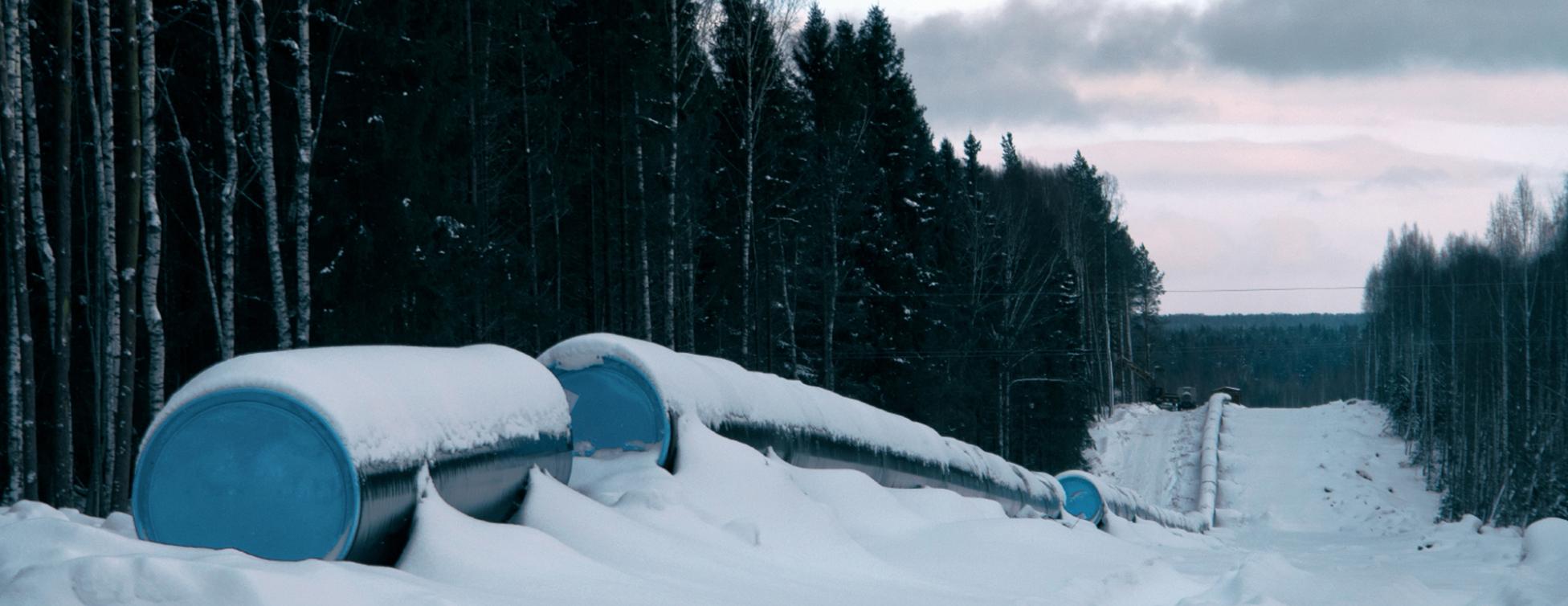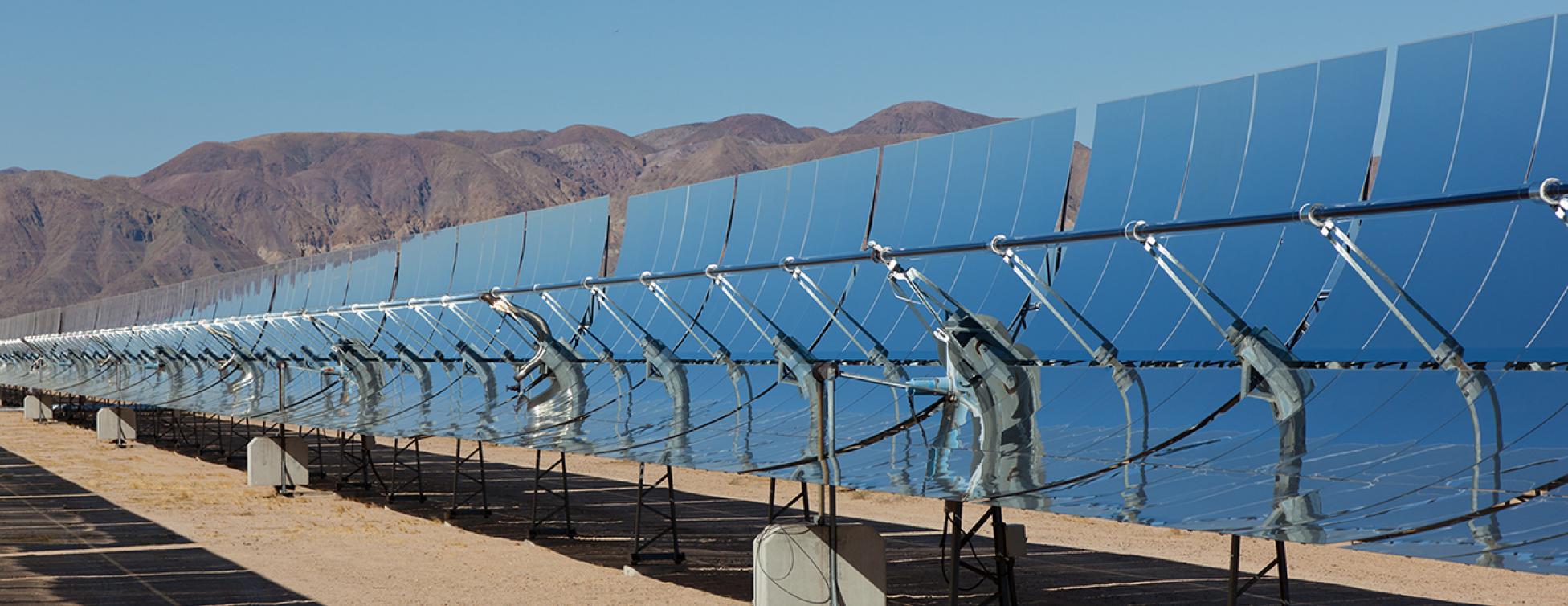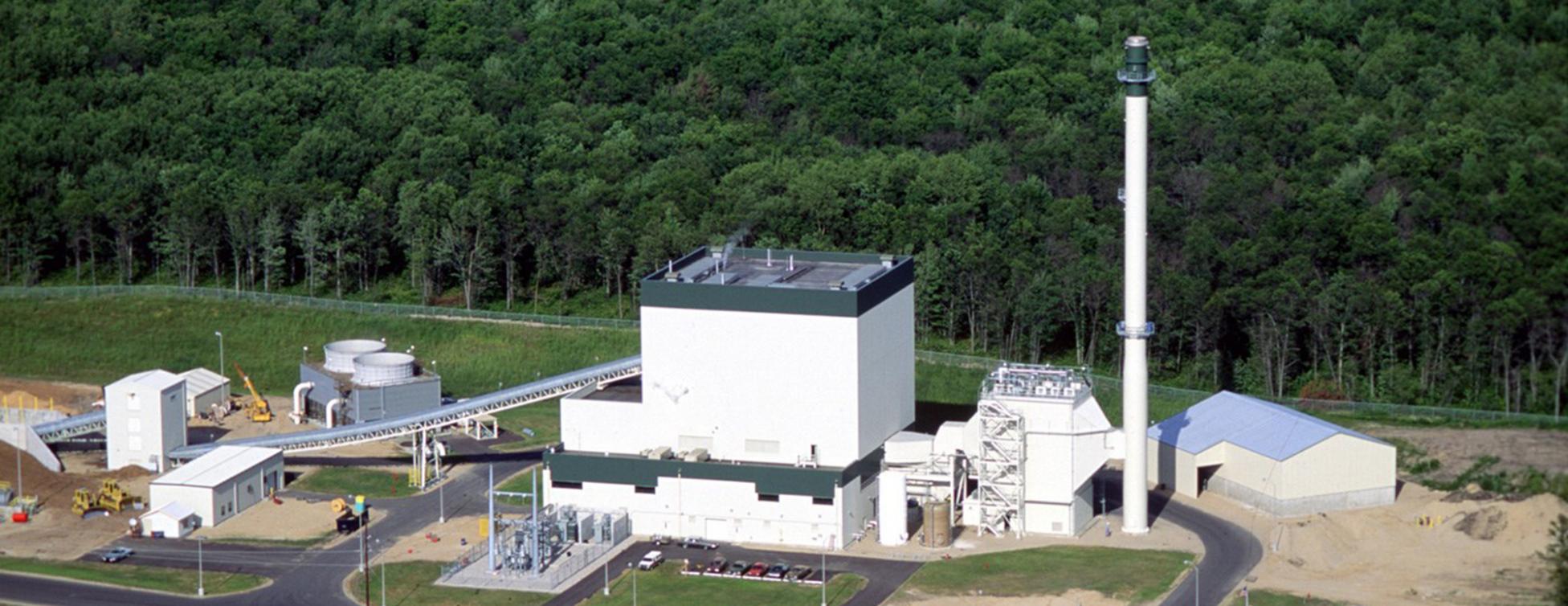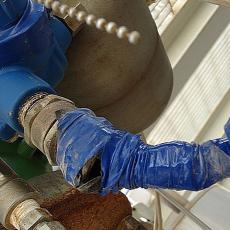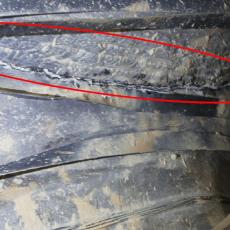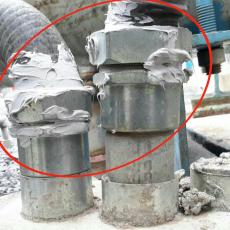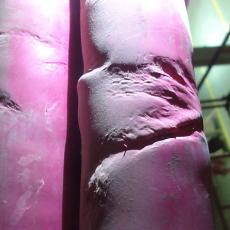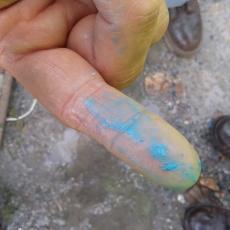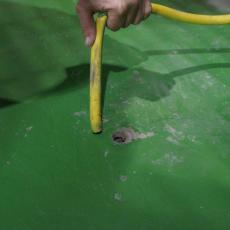QC Inspection
Flex-abuse
Where labor and supervision are less skilled, electrical installation quality can be very poor. However, keep in mind that all EPC contracts have codes, standards, and often owner specifications that provide overlapping requirements that mandate this be done properly and that it is verified by contractor QC personnel. But, to no avail.
One aspect seen on almost every developing country project, is the abuse of liquid-tight metal flex. Please note the photos are from NEW plants, and alarmingly in some cases not even to COD.
Flex is designed to be used in locations where there is differential movement between a piece of equipment and conduit feeding a circuit to the equipment. Flex is not intended to be a shortcut device where an electrician does not have the skill to make proper conduit bends.
Far too often, flex is used where it should not be. To put an approximate number on it, easily 50% of flex use should not exist.
In other cases, the proper fittings are not provided on each end, grounding continuity is not assured, excessive flex length is used, leaky installation is... Read more
Costs somewhat more to perform correctly.
The life-cycle ramifications for owners can be significant due to water damage of electrical and I&C devices leading to intermittent system ghost trips and failures.
Trust Us, it’s P91
At one of the world’s most spectacular power-desalination facilities, the systemic weld defect discovery resulted in a soul-crushing realization that some contractor’s self-interest has no moral boundary. If they think they can get away with something, they will certainly try, regardless of the impact to a client/owner and even themselves. Even more troubling, there really is little financial gain with some of these actions.
What started as an investigation into welding defects not properly identified in QC documentation, evolved quite dramatically when a P91 (9% Cr) hot reheat steam piping failed radially at a fabricated wye (fitting) near a steam turbine. Luckily, the failure was not catastrophic, being about 12” long, and allowed a prompt orderly unit shut down with no injury.
The fitting was cut out, and boat samples of the crack area were sent to a contractor lab and owner lab for metallurgic analysis. In the meantime, the head scratching started. It was clear early that the weld records had issues, this was visible internally. However, while waiting for metallurgy results, a... Read more
Savings from less rework and use of less skilled welders. Maybe $1mm. Cost to reweld all the large-bore in a huge power plant…??
Repair cost to the EPC contractor was immense, but the cost to the Owner was far greater due to the extended outages which persisted many years while O&M was trying to run the facility. This was well over a $100mm problem to the Owner the 1st year alone.
Weld Record Anomalies
Our default perspective is positive, and we prefer to be able to accept a story or data (documentation) as reasonably true even if we don’t believe all of it. We became gob smacked as a seemingly curious paperwork question morphed into extreme seriousness, the deeper we dug.
As an introduction, a review was performed of a very large facility shortly after COD. One aspect of the review was welding code compliance (ASME). This review was performed for all Section 1, BEP, and NBEP field welds for all the units/blocks. This started as a documentation review.
Initial findings were curious. Of the 25,000 large-bore field welds, only one (1) documented repair (R1) was indicated. Otherwise, the records showed no defects in any visual or radiographic inspections. Please keep in mind, the labor in this location was less than average and the work conditions extreme. In a western context, a good site welding program reject rate is perhaps 1-2%. In this situation, 4% would have been an overachievement, but 0%. This did not smell right. But all the paper appeared fine, except…
In one... Read more
Savings from less rework and use of less skilled welders. Maybe $1mm.
Repair cost to the EPC contractor was immense, but the cost to the Owner was far greater due to the extended outages which persisted many years while O&M was trying to run the facility. This was well over a $100mm problem.
RTV to Fit
EPR has been in many greenfield plants just prior, or just after COD. Basically, new plants.
Without hesitation, liquid-tight flexible metal conduit (flex) is abused and mis-installed possibly more than any other heavy industrial components, especially in developing regions.
Often labor is not given proper instruction and almost never the proper tools to install this system correctly. This results in fittings that are, at best, hand tight. Consequently, there are grounding concerns even in the best cases where flex appears to be installed correctly, assuming an internally grounded flex is used and the correct fittings. In most cases leaks occur and instead of tightening the fittings, a big smear of RTV is used as a seal. This usually does not work and creates a mess of the install.
In some plants, we have run studies in limited areas intending to be ‘representative’ and found >95% of flex fittings are loose.
For Owners concerned about the longer-term implications of moisture in electrical and instrument equipment, this is not a positive finding.
None. Probably costs more to perform incorrectly.
The cost of repair would seem manageable, but this defect is so pervasive in most plants that cost can be material. However, the O&M cost for an Owner can be even higher due to device mortality.
5kV Cable Mischief
The photos of the damaged 5,000-volt cables are from three plants that recently entered operation (at time of inspection). For every photo shown, there were dozens of similar defects.
In some instances, the cuts and holes appear to be deep enough to damage the copper shield tape. Damage to the outer jacket will allow moisture into cable jacket and cause premature failure.
The cables were seemingly not installed in a workmanlike manner and appear to have been damaged during cable pulling. This casts suspicion of the installation methods, field construction supervision, and quality control inspection processes. As a reminder, pulling cable in a raceway with sharp edges or in a manner that damages the cable is a code violation.
This type of defect does not need much explanation, but in addition to being prohibited by electrical codes, the EPC contract also had specific language related to damaged cables and accepted project methods for resolving such issues. In the absence of an Owner approved exception, there were none, the cables needed to be replaced.
In addition, the... Read more
None.
Cost of proper repair is cost of replacement. This is very high. Cost to Owner depends on how many failures related to fires, outages, or injury occur.
Uncured Coatings
One of the more interesting construction defects observed at a plant in Asia is a nearly universal application of coatings that did not cure.
As background, modern "paint" used in a power plant is a complex engineered product often applied in two or three layers. This is because each layer has a purpose. For example, inorganic zinc is often used as a primer, but not suitable as a top coat. Similarly, epoxy is used as a second coat, but not a topcoat because it is poor at enduring UV unlike a urethane.
Each of the layers must be properly mixed, and usually is catalyzed with a hardener. The proportion of hardener to base product is very important. Too little, the coating never cures and perpetually stays soft. It's a failed coating. Another important factor is to keep water (rain and condensation) from the coating components. Water affects curing also.
At the plant in question, easily 70% of the coated plant (large coal plant) had coatings that were not cured. To test this defect, ASTM has a MEK (Methyl Ethyl Ketone) wipe test which roughly involves a clean cloth, a little MEK, and... Read more
None.
Colossal. Left unrepaired...
Grounding
Along with a few other items, grounding is almost universally abused in developing region heavy industrial construction. Worse, it is usually not addressed in commissioning, or by construction QC.
Part of the problem stems from ignorance by craftsmen about the importance of grounding. This is compounded with the fact that proper exothermic welding and crimping tools are often not provided. Perhaps supervision is also unaware of the details involved, or perhaps uninvolved. Whatever the reason, this is an important concern and engaged oversight by a qualified owner’s representatives should easily spot and improve this condition early. That said, on every one of the projects in thee pictures, an OE was at the site and well-staffed, so that really leaves competence or a lack of leadership support as the possible issues.
Regarding the defects. A plant and its equipment that is not properly grounded is unsafe. Often ghost operational events (think trips) occur without a concrete root cause ever being identified. Obviously, it can be a personnel risk issue. In plants that have... Read more
None.
Repair cost can be moderate in systemic cases. However, real cost is in equipment damage, loss of production, or personnel injury.
Pillars of Salt & Sand (and Plastic)...
Piers are structural. This necessitates that they are installed correctly with every detail.
As with most construction defects, this is a simple problem of unskilled and unsupervised workers. The problem is compounded by a contractor culture that allows a QC program to run as a "paper" generating endeavor completely disassociated from the facts of field performance. In many cases, it's evident that there is no inspection. This is such a case...
Grout must be installed where to concrete conditions conform to the manufacturers recommendations to assure a strong bond between the materials (concrete and grout). Typically, this involves a rough surface, clear of debris, and free of any existing concrete surface coating, and similar.
Well, in this case, it's hard to imagine how these piers ended up with plastic trash being embedded at the bonding joint, among other concerns.
One certainty, there was no engaged contractor QC or owner involvement.
Essentially none...
In the future, the piers will need to be re-grouted as routine maintenance. Unknown cost.
Failed Expansion Bellows
At a new plant with large-scale desalination operations a recurring failure was noted. Dozens, probably hundreds, of failures of 24” rubber expansion bellows occurred due to incorrect installation.
The summary conclusion in this case is that the contractor provided no training or oversight to piping personnel responsible for installing this engineered device.
Operation of the systems created continuous piping vibration (normal levels) and the environment was quite hot, even the working fluid (seawater) was quite warm so the bellows was probably incrementally more relaxed. However, failure was certainly due to flange-to-flange dimension busts, misalignment of bolt holes, out of square flanges, and an assortment of creative abuse.
Where flange-to-flange distances were not to specification (narrow) the bellows nearly universally failed due to bolting impinging on the rubber outer layer of the bellows.
This defect could have easily been spotted by engaged contractor supervision, or by an owner’s representative, but neither addressed the problem which is easy to see. The... Read more
None.
Unknown. Device mortality will be a continual O&M cost for the life of the plant, unless piping changes are made during outages.
GRP Joint Fail
EPR evaluated a very large facility that had one of the world’s largest desalination operations at around 250,000,000 gallons per day. An extraordinary facility in terms of scale and elegance of design. But separately, there were quality concerns. The photos are about 12 months after COD, so the plant was effectively new. For context, the seawater and freshwater ‘loops’ in this plant were miles long and complex configuration of GRP (glass reinforced plastic) commonly known as fiberglass.
GRP is an excellent product but requires attention to detail when installed. Joints need to be ‘layed up’ with a carefully proportioned two-part resin over a clean and prepared substrate.
In this plant, chunks of GRP started to appear in the process screens. On further evaluation inside drained circuits and elsewhere via borescope inspection evidence of GRP delamination and shedding at the joints was discovered. If there were a few instances of the problem, it would have been noted and dismissed, but this condition appeared in varying degrees in all the units and interconnecting piping.
The... Read more
None.
Unknown. Consider the primary revenue for this plant is water production and a unit outage costs several $X0,000/day. This could get expensive.



